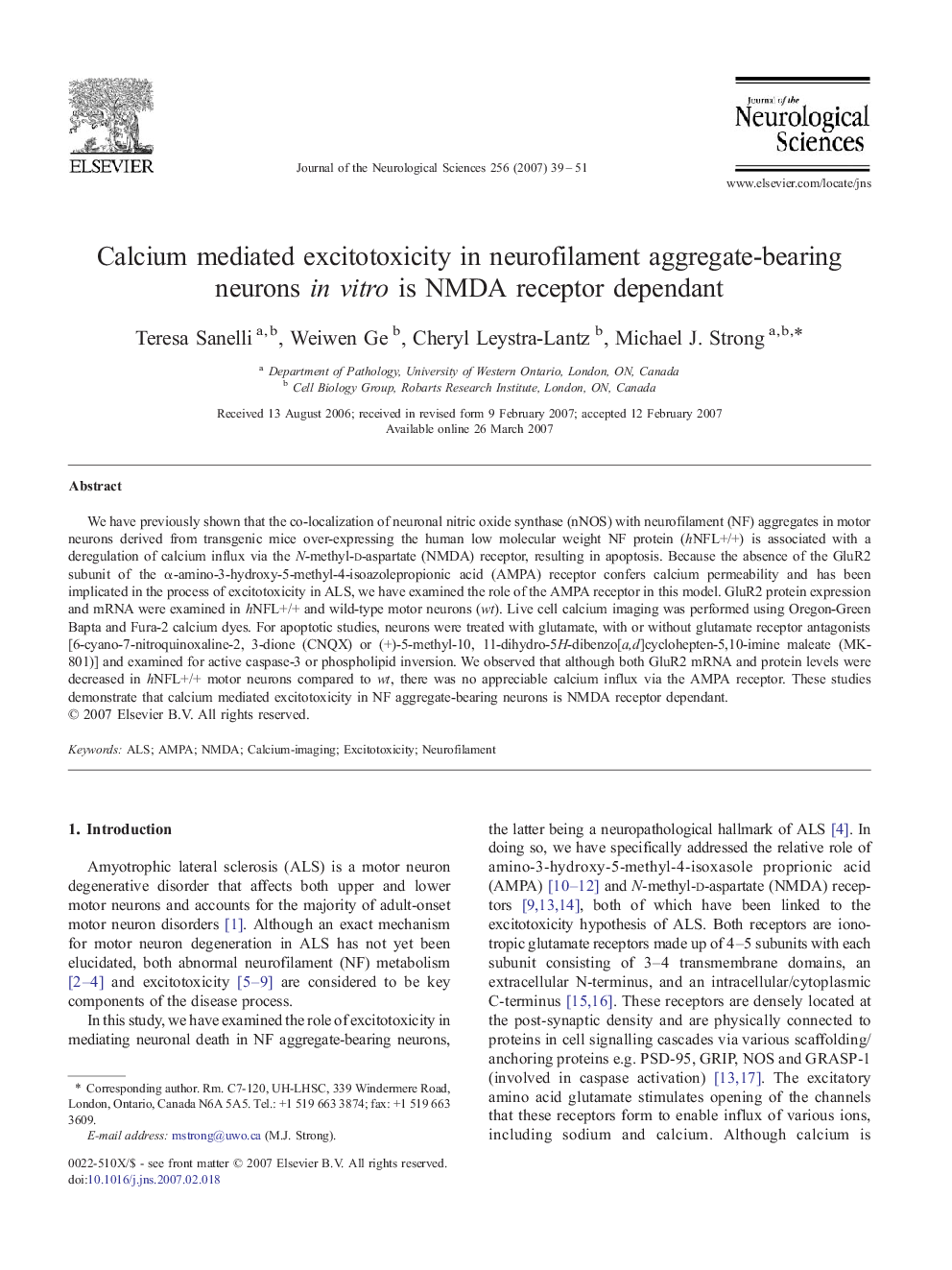| Article ID | Journal | Published Year | Pages | File Type |
|---|---|---|---|---|
| 1916413 | Journal of the Neurological Sciences | 2007 | 13 Pages |
We have previously shown that the co-localization of neuronal nitric oxide synthase (nNOS) with neurofilament (NF) aggregates in motor neurons derived from transgenic mice over-expressing the human low molecular weight NF protein (hNFL+/+) is associated with a deregulation of calcium influx via the N-methyl-d-aspartate (NMDA) receptor, resulting in apoptosis. Because the absence of the GluR2 subunit of the α-amino-3-hydroxy-5-methyl-4-isoazolepropionic acid (AMPA) receptor confers calcium permeability and has been implicated in the process of excitotoxicity in ALS, we have examined the role of the AMPA receptor in this model. GluR2 protein expression and mRNA were examined in hNFL+/+ and wild-type motor neurons (wt). Live cell calcium imaging was performed using Oregon-Green Bapta and Fura-2 calcium dyes. For apoptotic studies, neurons were treated with glutamate, with or without glutamate receptor antagonists [6-cyano-7-nitroquinoxaline-2, 3-dione (CNQX) or (+)-5-methyl-10, 11-dihydro-5H-dibenzo[a,d]cyclohepten-5,10-imine maleate (MK-801)] and examined for active caspase-3 or phospholipid inversion. We observed that although both GluR2 mRNA and protein levels were decreased in hNFL+/+ motor neurons compared to wt, there was no appreciable calcium influx via the AMPA receptor. These studies demonstrate that calcium mediated excitotoxicity in NF aggregate-bearing neurons is NMDA receptor dependant.
